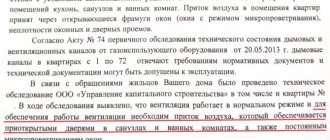When to turn off radiators
There are several situations when you need to turn off the water in the battery:
- in the event of an emergency that threatens to flood your own and neighbors’ homes with hot coolant;
- if you decide to paint the radiator during the heating season;
- when you need to change or wash the battery without blocking the riser;
- you need to limit the flow of heat into a room that is hot in winter.
Radiators that are too hot are the cause of heat and stuffiness in the apartment
Note. Some apartment owners practice shutting off heating radiators for the summer while preserving the coolant. The goal is to protect heating devices from clogging during the autumn start-up of the system, when a lot of rust flows through the pipes. Below we will explain how to do this correctly.
Now the main point: you will never have problems with how to disconnect a radiator from a centralized system if it is connected according to the correct circuit using shut-off valves (ball valves). You will be able to shut off the coolant flow at any time if such a need arises, without disturbing the thermal conditions of adjacent apartments. The shutdown algorithm is simple:
- Close the lower and then the upper valve on the battery.
- If you plan to paint the heating device, then the previous step is sufficient. Wait until the radiator is cold and paint.
- When it is necessary to replace batteries in the middle of winter, before removing each heater, release the pressure through the Mayevsky valve. Then unscrew the bottom plug and carefully drain the water, then unscrew the joints and dismantle the device.
Correct connection of the heating device to the central heating risers
A separate question is how to properly turn on the heating radiator so that there is no air pocket left in it, which prevents maximum heating of the surface and air in the apartment. Here the algorithm is similar: you need to open the lower valve, then the upper one, and at the end release the remaining air using the Mayevsky tap.
The handle stands along the axis of the pipe - the valve is open, across it - closed
Note. If you do the opposite and open the top valve first, you risk leaving some air inside the sections of the device. This is not critical, but the de-airing procedure will have to be repeated several times.
Location of the Mayevsky tap on the heating device
Heating in the apartment
We will consider heating in an apartment based on this picture:
I specifically gave two options, since some may have a tap on the jumper, while others may not. You can read more about the jumper (or bypass) with the tap in the article: Heating diagram. Do you need a bypass valve? And now we will talk about something else.
Here comes winter, we turned on the battery, opened the jumper and our house is warm and dry... Beauty! The battery, as they say, is spitting! But sooner or later winter ends, and in our front staircase we see an announcement about turning off the heating. What should we do with the battery?
What to do with a stuck ball valve
If ball valves are not rotated for years, they tend to sour and jam. In such a situation, do not try to resolve the issue physically and do not force the “butterfly” with pliers or a gas wrench. It is made of a brittle alloy and will probably break. Proceed like this:
- Unscrew the locking nut and remove the butterfly handle from the stem.
- On most of these valves, you will find a nut under the handle that clamps the plastic seal. Loosen it by turning the wrench half a turn. If there is no nut, go to the next step.
- Take an adjustable wrench or other device that allows you to securely grab the flats on the rod. Without applying much force, turn it as far as possible.
- When you feel resistance, turn the rod back all the way and forward again, trying to turn it a few more degrees. Work carefully and without haste!
- In this way, rotate the valve 90°, then tighten the gland nut and reinstall the handle.
An adjustable wrench can be used to firmly grasp the edges
Advice. If you have WD-40 spray lubricant in your household, apply it to the stem and wait 5-10 minutes before rotating.
Be doubly careful when turning off radiators with soured taps during the heating season. If you hurry too much and apply too much force, you will break off the metal rod or ball, and in the worst case, the valve body will burst. A stream of hot water can shoot out from the crack, which can burn you. While you go down to the basement and close the heating riser, the coolant will cause damage to the interior of the room, and you can roughly guess how much it costs to renovate the apartment now.
If you are not sure of your actions, call a plumber. More information on how to close a jammed ball valve in order to disconnect the radiators is described in the video:
Who to entrust the work to?
Since you will still have to pay, it is better to do everything at once. In any case, with all the radiators on one riser. And here the question arises: who will carry out this work. To get started, you can go to the housing office or departmental office and ask about their prices. As a rule, the prices there are rather high, and the quality of work is not up to par. To make sure of this, you can ask neighbors who have already dealt with them.
You can find a private owner. Just not from advertisements, but from the recommendations of acquaintances, colleagues, friends. Their prices are rarely higher than those of operators. And the quality is better - this is their bread: if they do a bad job, there will be no customers. That’s why they try (if they are sane) to do everything conscientiously.
Choosing a performer is not an easy task
There is still an opportunity to negotiate with the housing office employee by bypassing the cash register. But here the option is controversial. Firstly, they tend to ask for a price based on the client’s wealth and it is far from a fact that they will demand less than the price list. More likely - more. Why, tell me, should they pay more for the same quality of work (it is unlikely that they will work more diligently than at their main job)?
Another option is to contact a specialized organization. And again, preferably based on recommendations. Although, organizations are forced to monitor the quality of work for prosaic reasons: they need clients. If they have a bad reputation, no one will go to them. Therefore, if you don’t know the organization, there are no recommendations, you can pay attention to the period of its existence on the market. If it’s not been a year or two, then they definitely know how to do something, otherwise they wouldn’t have lasted that long. Naturally, pay attention to the services they provide. Many people suggest that issues with permission and disconnection of risers should be handled by the management or operating organization. You just specify the list of works and time. How expensive will it cost? In different ways: organizations, like their leaders, are different. It may be more expensive than the work of a mechanic from the housing office, but at least you will have someone to file a claim with in case of problems: you sign an agreement that will clearly outline who is doing what.
And the most economical option: do everything yourself, with your own hands. It’s not an easy task, but it’s not the gods who burn the pots. Just first you need to find out everything down to the smallest detail, purchase everything you need, prepare tools and equipment, and only after that write an application to turn off the riser.
This all concerned planned repairs or preventive maintenance. If a radiator or pipe is leaking, you definitely have to take action yourself. Read how to fix a radiator leak here.
Disabling radiators without fittings
It is no secret that in most apartments to this day there are old cast iron radiators or steel convectors without any shut-off fittings, which makes it impossible to shut them off during the heating season. Moreover, according to the old heating scheme, convectors in high-rise buildings are connected to risers without straight sections - bypasses. Therefore, if an accident occurs with a coolant leak, you must act as follows:
- Try to provide some kind of container to collect hot water. If the stream flows to the side, wrap a thick cloth over the break site so that the water flows along it into a bucket.
- Call the dispatch service of your heating energy supply company and report the accident.
- While the service personnel are getting there, provide them with access to the basement, find the keys, open the door, and so on.
- Try to block the riser yourself.
While your water is flowing onto the floor, your neighbors below have a suspended ceiling turning into a bubble.
A few words about how to properly turn off the heating riser. Find in the basement the heating point of your entrance and vertical pipes embedded in a large-diameter main or into a common collector. Follow where they go to determine the emergency riser, and turn it off with a tap. Contact by cell phone someone in the household who can confirm that the geyser eruption in the apartment has stopped. If you couldn’t find your pipe, close all the valves one by one until you find the one you need.
Attention! Don't try to force yourself on basement valves that are stuck due to rust. When they cannot be closed manually, it is better to wait for a team of plumbers; they will find a way to stop the flow of coolant. Otherwise, a very awkward situation will arise when you also break the main fittings, leaving the apartment building without heat during repairs.
An example of an access heating point and connecting a riser.
It is also worth considering the question of how to shut off the radiator if it is hot in the apartment due to the service provider’s failure to comply with the temperature schedule of the boiler room. It would seem that if there are shut-off valves, the problem is solved by manually closing the taps. But after the temperature in the rooms drops, the valves will have to be opened again. This way you will get tired of turning the taps long before the end of the heating season, so you need to think about how you can adjust the heat output of the radiators. The options are:
- if possible, install a thermostatic valve on each radiator, limiting the flow of coolant and automatically maintaining the set temperature in the room;
- It is nice to cover the heating device with a blank screen with small holes if there are no shut-off valves on the connections.
Important. The ball valve is not a means of adjustment; it is intended only to completely cut off or open the passage of the coolant. In the “half closed” mode it will not give the desired effect and will fail much earlier.
Thanks to worn-out pipelines, district heating systems are notorious for dirty water that quickly clogs small passages. Therefore, ordinary valves with thermal heads will not last long here; you need to buy special valves with increased capacity, which are produced by the well-known brands Danfoss and Herz. How to install them on the connection to the radiator is shown below in the diagram and described in this material.
Radiator thermostat installation diagram
When it’s hot in an apartment in the middle of winter and there are no control valves, residents have no choice but to cover the radiator in the room with a decorative screen. The principle is simple: the radiator will heat the air inside the box, after which the intensity of heat transfer will sharply decrease due to the small difference in the temperatures of the air and the surface. That is, the coolant will give off less energy, and the amount of hot air coming out from under the screen will be limited by the size of the decorative openings. How to assemble and install a nice MDF box on a heating device is shown in the video:
Thermal head - EC
Thermal heads for heating radiators.
A device that allows you to regulate the temperature of heating radiators is called a thermal head. This is not the only name for this device; there are also: battery thermostat, thermostatic head, battery temperature controller, radiator thermostat, radiator thermostat and others. Let's talk in more detail about this device.
Various types of thermal heads for heating radiators.
- Operating principle.
- Classification.
- Installation options.
- Settings.
- Conclusion.
The design and principle of operation of a thermal head for a heating radiator.
The thermostatic head can only be used in conjunction with a thermostatic valve. The thermostatic valve refers to shut-off and control valves and, using a thermal head, can regulate or shut off fluid flows in the system.
Construction of a thermostatic heating head and thermostatic valve.
The ambient temperature near the thermal head affects the state of the substance in the bellows. By decreasing or increasing in volume, the substance affects the position of the pressure rod and thereby regulates the volume of coolant entering the radiator. When the air temperature in the room rises, the substance in the bellows begins to expand, squeezing out the rod, which in turn reduces the cross-section of the channel, and the volume of coolant entering the radiator is reduced. When the temperature drops, the opposite process occurs: the substance in the bellows is compressed, due to which the rod rises, increasing the cross-section of the channel, and the volume of incoming coolant increases.
The opening and closing of the stem is facilitated by two stainless steel springs: one returns the stem after closing the valve, the other after opening.
It is IMPORTANT to remember that for the thermal head to function properly, it must be periodically cleaned of dust and dirt. Please remember that cleaning agents and abrasives should not be used for cleaning.
Thermal head and valve in section.
Classification of radiator thermal heads.
All radiator thermal heads can be divided into two types:
mechanical - adjustment is carried out manually;
electronic – the adjustment process occurs automatically.
Mechanical models are a head of various sizes with a rotary handle. The temperature range can be controlled. In various models it starts from +5 °C and reaches +28 °C. The thermostatic head provides several operating modes, dividing the temperature scale. Each division is equivalent to 2-5 °C.
Mechanical thermal head for a heating battery.
Electronic thermal heads for controlling heating radiators are multifunctional thermostats that allow you to reduce heat energy consumption due to the possibility of programming. Let's look at the various functions that electronic battery regulators have.
Possibility of precise temperature adjustment by 0.5 °C;
Possibility of temporary temperature programming;
Instant control of room temperature, providing comfort and saving your money for heating;
Possibility of programming comfort temperature and reduction temperature for each day of the week;
Possibility of additional configuration of various factory modes, as well as individual operating modes of the battery thermostat;
Additional functions: vacation/party, child/external protection;
Large backlit display designed for ease of use;
How to shut off batteries for the summer
The purpose of the event is to avoid dirt and rust entering the radiators, which travels along with the coolant through the pipeline network during the autumn start-up of the system, which is important for aluminum and bimetallic batteries with narrow ducts. The method is simple: in the spring you need to close the taps on the connections to the heater, since it is not known whether there is water in the radiators in the summer. Typically, during this period, technical services empty risers and heating appliances in apartment buildings, contributing to the damage of metals by corrosion.
Advice. If you have Soviet or new-style cast iron batteries installed in your apartment, then there is nothing to worry about blockages and corrosion. Cast iron is valuable because it is “friendly” with low-quality coolant, and the flow sections in it are large enough not to become clogged.
The order of the event is as follows:
- Choose a moment when the heating is almost off, but water is still circulating through the pipes. Turn off the taps near the battery (first the lower one, then the upper one).
- When autumn arrives, wait until the heating system starts up. The event is characterized by the familiar murmur of water in the pipes.
- After making sure that the risers are heated, after a couple of days, open the valves and remove air using a Mayevsky tap. During this time, dirty impurities in the coolant will pass through the pipes past your radiators.
Another tip. In the event that you miss the moment of emptying the heating system, still turn off the taps on the battery. In the fall, turn them on 1-2 days after the heating system starts operating, as shown in the video:
There is a myth: if you turn off the battery taps, the hot water will decrease in volume after cooling, creating a vacuum, causing the body of the heating device to crack. This is unreliable information, since compressing water by 5-6% will not create pressure that can destroy the metal. For a cast iron radiator to be damaged, it must reach a value of at least 15 Bar, for a steel radiator it will require over 20 Bar, and aluminum products will withstand 30 Bar.











